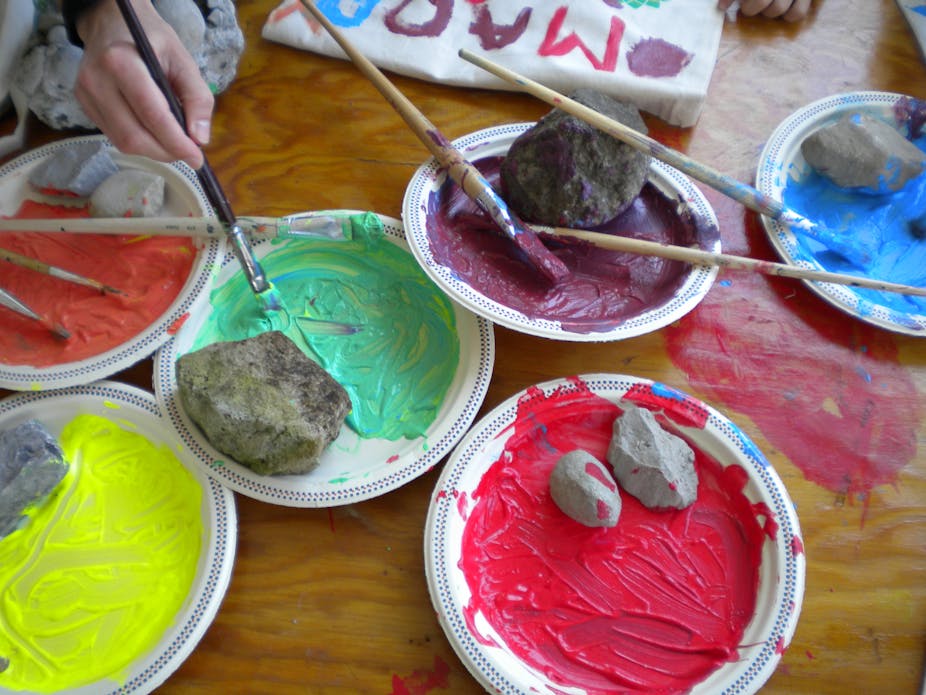There are few English nouns that have received such relentlessly good publicity as the word “creativity”.
Creativity — apparently — drives innovation, increases productivity, and safeguards the national economy. Creativity — apparently — drove man to discover fire and venture forth from the cave.
But a more than cursory examination of the history of the creative idea suggests that creativity is not a biological “given”, but a socially and historically conditioned idea with a meaning that shifts over time.

The creative industries rhetoric of the last two decades is famous for claiming the association between creativity and economics as its own discovery — but that, too, is historic.
The claim can be traced back as far as the Industrial Revolution, at which time the owners of Manchester cotton mills, railway boosters and telegraph entrepreneurs were not adverse to trumpeting the success of their own “creative industries” (yes, the phrase was occasionally even used), including the “creative power of railways”, the “creative power of the steam engine”, of the telegraph, of all forms of industrial technology and — much to the ire of Karl Marx — the “creative power of capital”.
Context is king
The more habitual cultural association between art and creativity has perhaps obscured the fact that the creative idea (for the word “creativity” — apart from a few nonce usages — is a product of the 20th century) has throughout its history been intermittently deployed in a range of contexts well beyond the sphere of art.
Indeed, it is also important to consider that for 2,000 years prior to the 18th century, art was not deemed to be the product of creativity. In the modern world, we tend to run the ideas of art, creativity, imagination, and aesthetics together – but actually they are separate ideas and they emerged at distinct historical moments.
Imagination originally referred to something misleading or deceptive, aesthetics was originally conceived as the flipside of ethics, and art — as ars — could equally refer to the making of a ship or a shoe.

The creative idea only acquired an association with specifically human forms of making in the late 18th century. It emerges in the context of a wider social transformation, as a rural agrarian society forged through systems of hierarchy and order gives way to a society that is increasingly industrial and increasingly mobile — a society moving out of conditions of dependence into a world that people believed they were making for themselves.
It takes shape less against religious than natural scientific ideas about creation, and comes to be associated with a sense that human beings are free to act in self-chosen ways. With the rise of market economies there was not only economic growth and innovation, but – just as importantly – growth and innovation become necessary. Put crudely, capitalism makes creativity a desirable commodity.
Children
Of course, ideas are not the product of shifts in social relations — they have to be invented.
Take the creative child, for example.
The creative child was “discovered” by the Prussian pedagogue Friedrich Froebel, and came to prominence when the kindergarten movement took root in the United States.
The early kindergarten was modelled on a version of the creative idea that was new in that it was democratic, but also favoured the idea of community if not conformity. Kindergartens were conceived as miniature republics, and the creative child became the symbol — if not perceived vehicle — for economic regeneration and national healing in the wake of the American Civil War.

American philosopher and educator John Dewey’s “industrial kindergarten” (as it was called in the 1890s) set out to cure the early kindergarten of its Prussian tendencies. But Dewey’s idea of situated creativity is also significant for never having been rooted in aesthetics or the arts.
Of course, the creative child was “discovered” yet again in the wake of the Sputnik Shock at the height of the Cold War.
This time childhood intervention favoured a model of creativity that promoted “divergent” as opposed to “convergent” thinking, a product of the testing programs that American psychologist J.P. Guildford carried out on US fighter pilots during the second world war.
The creative child was identified through massive testing regimes (such as the Torrance Test), which now focused on individual traits and individual genius as a means to combat totalitarianism, to enhance the national economy and technological arsenal and — presumably — march on to victory.
It is not my intention to deconstruct creativity out of existence – any more than it is possible to deconstruct intelligence out of existence. Rather, it’s timely to highlight the pressing need to interrogate the ideologies embedded in the all-too-frequent calls for enhanced creativity, and the constant promotion of creativity as a perceived cure for the social anxieties of the age.

